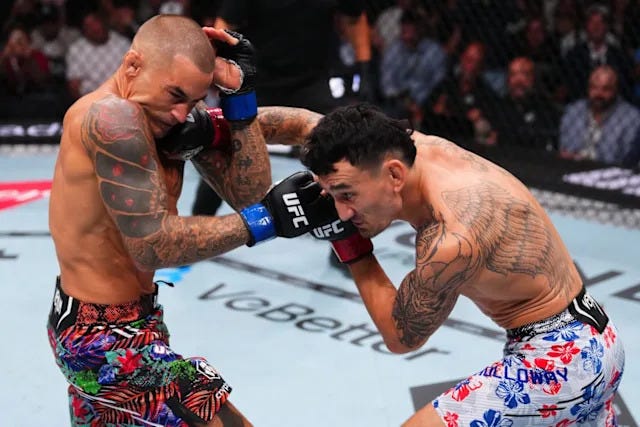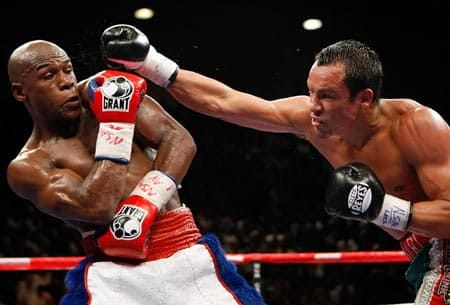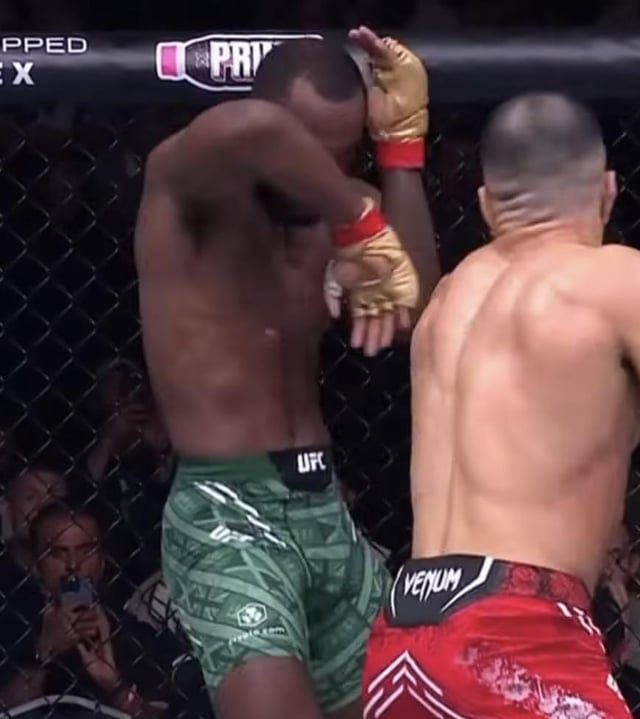Breaking the Diamond: Max Holloway
Dustin Poirier vs. Max Holloway III, Farewell Diamond
Farewell, Diamond
Contents:
Pre Fight Notes
A Natural Predator
Glimmers of Hope
Another Classic Affair
Dustin ‘The Diamond’ Poirier brought his storied career to a close, headlining UFC 318 this past Saturday in his home state of Louisiana. You can expect something more intimate regarding what Dustin Poirier means to an amateur martial artist and fight analyst, but lets start with what I do best and break down a spectacular fight. The first half of this article will compile my reads and notes taken before the fight, largely after assessing their second fight. The latter half will be a breakdown on their fateful trilogy fight from Saturday, and we can see how well (or horrible) I did at constructing a path to victory for Max Holloway.
Disclaimer: The video clips included in this article are not owned by the author. They are included for educational purposes only to illustrate key moments in the fighter’s career and demonstrate aspects of mixed martial arts techniques and strategies. All rights to the video content belong to their respective owners.
Pre Fight Notes
Dustin Poirier is receiving all the shine this weekend, and rightfully so given his retirement, but I would find it remiss to not focus on Max Holloway as the loser of their second meeting. The clash for the lightweight interim title was a competitive but clear affair. Each man unlocked ever deeper levels of heart, grit, and adaptability, but it was the Diamond who shone out in the end.
When assessing Dustin Poirier, his early career and penchant as a heavy handed action fighter often mar his true skillset as a counter puncher (V1). His eponymous Poirier Shift (V2) is a wonderful tactic in MMA to punish foes retreating in a straight line and maintain forward pressure, but his signature use of the Hillbilly Shell (V3, coined by Jack Slack) keeps him safe in the pocket or moving backwards. Poirier’s eyes remain unobstructed, and his hands high and in position to counter punch quickly. Poirier’s latent tactics and habits proved a mountain for Max Holloway to overcome throughout the early rounds of their classic.
V1
V2
A Natural Predator
As a fan of the sport, the matchup between Max Holloway and Poirier at UFC 318 excited me in that their second fight was such a classic, but came as a disappointment since Poirier was up 2-0 and he seemed to have been the natural predator to Max Holloway’s unending avalanche of light punches. Max Holloway has just as storied, (more so in accolades) as Dustin Poirier. Through this career Holloway has reinvented his style on a number of occasions due to whims, age, and the habits of his opponents.
When he met Poirier to contest the next challenger to Khabib Nurmagomedov, he was in the midst of a Featherweight title reign that saw him shower his opponents with punches and wilt them through sheer pace and volume. ‘Muffin-Top Max’ as he dubbed himself up a weight class, came in with this style but was outclassed by the defense of the Diamond.
Holloway was able to land his right straight to the body with abandon (V3) but he did not enforce it enough in the first three rounds of this affair. Holloway instead opted to direct the majority of his offensive output towards Poirier’s head, which is exactly what he wants. Poirier’s Hillbilly Shell, so named because of Poirier’s Cajun roots and function as a modified ‘Philly Shell’, is suited to defend the head at all costs. Looking at Floyd Mayweather utilizing the traditional tactic (I1), we can how his side on stance give the opponent a smaller targeting area. His lead hand is draped across the midsection to defend the only viable targets on the body, and his he can easily duck behind his lead shoulder to defend his opponent’s attacks. His rear hand acts as a shield to the side of his head for oncoming hooks while slipping and dipping, and parrying single shots in the dead spaces of the fight. Poirier’s guard, by contrast, (I2, I found the clearest singular frame of it being used by Leon Edwards), lifts the lead arm up while pointing the elbow out. This leaves the body wide open (V9) but means most punches aimed at the head simply glance off the arms and shoulders (V3). Holloway famously said between rounds of this fight,
“He’s blocking weird!”
He’s right, very few MMA fighters utilize a defense like this to stay in the pocket and counter. They often opt for a linear retreat . Holloway is himself an all−time great of the sport, and will figure something out. He was able to sneak in punches in the few holes Poirier provided (V4), but was confronted with his next problem: He was staying in the pocket too long.
V3
I1: Floyd Mayweather Jr.’s ‘Philly Shell’ or Stonewall defense
I2: Leon Edwards using the Hillbilly Shell (I’ve also heard it called the skull and crossbones guard) ineffectively against Belal Muhammad.
V4
Max Holloway’s success during this era was predicated on his ability to trade shots with his opponents and continue combinations through his opponent’s counters. As the fight wore on he would be met with less counter offense and a tired opponent (Ortega, Aldo) would become a human punching bag. These fights took place at Featherweight however, and Dustin Poirier, though not a one−punch knockout artist, is a thudding puncher who visibly hurts and wobbles every one of his Lightweight opponents. Holloway could not simply stay in the pocket in trade. He would often land with authority, but stay in the pocket to capitalize on his success only to be met with a hammer from Poirier (V5). Holloway’s style at this time was predicated upon overwhelming the opponent, though would have been much better served to land and exit range in this fight.
Dustin Poirier is one of the better southpaw operators in MMA. He is not a ‘pure southpaw’ like Conor McGregor; his game does not rely on traditional southpaw tactics, but is more than adept at taking advantage of the open−stance matchup. Holloway’s blistering pace was almost always preceded by the jab. Holloway has one of the better jabs in MMA, constantly occupying the open space between him and the opponent as a weapon, range finder, feinting and exit tool. An omnipresent jab comes with all these benefits, while also making Holloway’s offense predictable. Poirier’s right hook (with the lead hand) acts as a southpaw’s version of the cross counter, coming over the jab and clattering Holloway (V5, V6). Holloway’s offense was stifled at both ends, the right hook dinging him at the beginning of his offensive phases, and Poirier' overpowering him at the end.
Holloway’s penchant to retreat linearly was the last of his tendencies to bite him in the ass through this bout (V7). Holloway was often the aggressor this fight, despite most exchanges going the way of Poirier, but anytime Poirier advances his Poirier shift became the perfect tool to quickly close the distance Holloway sought to create, and punish him. Before this point, Holloway had never been hurt so consistently. Jose Aldo almost sent him to the shadow realm in each fight, but Poirier made the Hawaiian’s chin earn its keep. The majority of Holloway’s work was rendered moot throughout most of the first 3 rounds, and the more he tried, the more he seemed to eat Poirier’s counters at punching range (V8).
V5
V6
V7
V8
Glimmers of Hope
Dustin Poirier’s ‘natural’ style was incredibly well suited to deal with the Max Holloway’s never ending offense. The result was a clear win for Poirier yet it was an incredibly competitive affair. Holloway fought his way back in the third round, switching up his style to more effectively deal with Poirier, punish his openings, and maintain a level of defense. His most consistent damaging tool was the right straight to the body (V9). Holloway’s jab (more accurately the double jab) was a great tool to enter range on a slight angle, obtain outside foot position, and bait out the Hillbilly Shell to stab Poirier’s midsection with a good straight. He did not enforce it enough in the early rounds where it could have paid off more later, but it did allow him to stay competitive after a few harrowing moments early.
Looking ahead to their trilogy fight, its prescient to note Holloway’s evolution as striker. Since his rematch with Volkanovski his kicking game has again become a cornerstone of his game, often leading with kicks from borders just as much as he jabs. Holloway’s kicking game has never disappeared but it was certainly deemphasized in this phase of his career. Holloway’s kicking in this fight came in spurts, but almost all of them had wrinkles of success to them.
Its a tad derivative at this point to say, and though not true in all cases, kicking into the open side from borders is a great idea in the dead spaces of the fight (V10). This is especially effective against Dustin Poirier given his Hillbilly shell is best suited to protecting his head. Kicking the head will simply hit the arms, which is never a bad idea, and a body kick will likely go in undefended. Holloway would find much more success against Poirier in shifting his focus from jabbing at borders, to kicking more. Kicking keeps Holloway outside of punching range and forces Poirier to be defensive. When he’s defensive, he can’t counter punch or enter mid range to start boxing exchanges where he found the most success. Kicking at the end of exchanges (V10) also keeps Holloway from sticking in the pocket too long, instead getting a free kick off on a defensive Poirier while re establishing kicking range. Where Holloway was susceptible at both the beginning and ends of exchanges throughout this fight, kicking can keep him ahead at both ends instead.
V9
V10
So much more can be gained from kicking Poirier than accruing attritive damage. The threat of the kick gives Holloway options from which to enter range. Stepping down into southpaw after kicking is a cheeky way to change stances without compromising oneself (you’re already on one foot from kicking anyway). Poirier usually leads the stance matchup by virtue of his Poirier shift, but Holloway can introduce some mix ups by stepping down into southpaw and dictating the pocket exchanges on his terms (V11). While effective, Holloway’s floating teep / stomp entry has been much more effective throughout his career at facilitating stance switches and entries (V12). The linked video explains its utility in depth, but its uses as a feint forces the opponent backwards and defensive while Holloway crosses a large swatch of empty space between them, giving him the perfect opportunity to punch without being countered. The threat of a forward moving attack is not dissimilar to Poirier’s own Poirier Shift, nullifying his deadly right hook counter that comes with stepping through into range more thoughtlessly (V13). Knee raises with the lead leg can keep Poirier just as defensive in pocket exchanges, allowing Holloway to step right into outside foot position (ideal in the open stance matchup) and tee off with his preferred combinations.
Holloway’s kicking game was best used as a positioning tool in sparse moments of this fight, and has since become one of the best aspects of his veteran game. Holloway’s kicks keep him out of Poirier’s preferred range in the pocket and facilitate safer entries. This is how he can dictate the geography of the fight in the rematch.
V11
V12
V13
V14
Holloway also showed flashes of brilliance within the clinch (V15, V16). He was able to land some stabbing knees in the middle of his combinations that only further added to his barrage of body straights that wore on Poirier late. His kicks can occupy his borders game, while his clinch work should be used to navigate the pocket. Holloway was often getting eaten up in the pocket; he chose to stay there and throw without much defensive thought. He would (and did) have much more success crashing into the clinch to smother Poirier’s punches after one of his patented flurries (V16), and pushing away to reestablish the long range. He can enforce his game in the areas where he is,
Better suited than Dustin Poirier, and
Actively taking away Poirier’s A game.
Kick from borders, and crash into the clinch to land some knees after throwing down in the pocket. This will wear on him, so by the 5th round, he can get back to fighting how he does best (V17). His fights against Arnold Allen (kicking from the outside, counter him as he comes in heavy hitting southpaw) and Gaethje (heavy hitting lightweight, kicks that mask entries, sitting down on punches) would perhaps be the best ones to model this weekend’s performance off of. Thankfully, Max Holloway has also begun sitting down on his punches since the Allen fight. Knocking out Korean Zombie and Justin Gaethje cold is something that wasn’t present in his earlier career. Holloway would often TKO his opponents through a sheer punching barrage, but rarely knock them out. While I do not mean to discredit his S&C team, which certainly played a role in his punching power and strength ceiling rising, his recent power is also due to him actively sitting into his stance to counter. Holloway has molded himself into an active counter puncher, where he was once an all out forward moving machine of arm punches. He punched for punching sake, merely to keep the opponent occupied and keep himself ahead. His newfound power and strategy will almost certainly be a hard hurdle for Poirier to overcome coming into this fight.
V15
V16
V17
Another Classic Affair
Keep reading with a 7-day free trial
Subscribe to Movement Martials to keep reading this post and get 7 days of free access to the full post archives.





